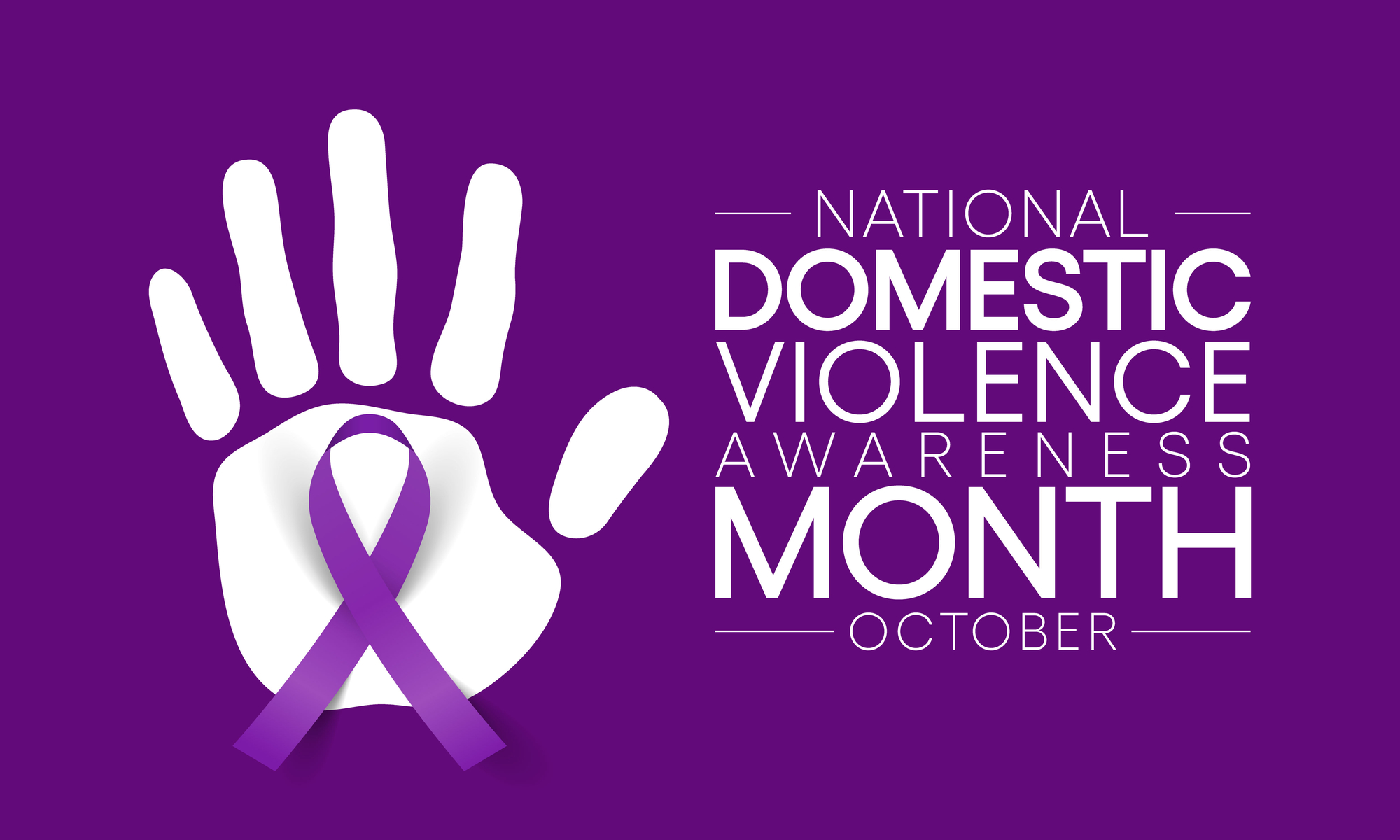I’ve made it my ongoing–and fervent–mission to continue to shine a bright light on a certain demoralizing, insidious and horrific cycle of behavior that continues to be a growing concern within the LGBTQ Community. This is Part Nine of the ongoing series that will address this potentially life-threatening cycle of abuse.
It’s purple month!
“Yeah? Really? Well, what’s it all about?” you may ask.
Let me explain. You see, we wear purple—actually, a purple ribbon—as a symbol used to honor victims and survivors of domestic violence/abuse (DVA), which can include sexual violence. And in the LGBTQ community, DVA is referred to as Intimate Partner Violence and Abuse (IPV/A). October has been designated as National Domestic Violence Awareness Month.
Statistics show that IPV/A occurs with similar frequency as in heterosexual relationships. Additionally, new research suggests that a greater percentage of LGBTQ individuals are living in fear of an abusive partner than previously thought. And each year, between 50,000-100,000 lesbians (or more) and as many as 500,000 (or more) gay men are battered, and about one in four LGBTQ relationships/partnerships are abusive in some way.
Sexual violence, stalking, and intimate partner violence and abuse are growing problems. What makes matters worse: incidences of IPV/A often are under-reported amongst same-sex couples.
Let’s drill down even further. The National Coalition of Anti-Violence Programs (NCAVP) states the following: “In the U.S., more than 10 million adults experience domestic violence annually. An incident of abuse happens more frequently than every three seconds.”
NCAVP continues. “1 in 3 women and 1 in 4 men experience some form of intimate partner sexual violence, intimate partner physical violence, and/or intimate partner stalking during their lifetime.” And try to digest this rather stomach-churning statistic: nearly 20 people per minute are physically abused by an intimate partner in the United States.”

In recognition of National Domestic Violence Awareness Month (NDVAM), I want to share with you how this observance came to be. And how it has grown.
NDVAM evolved from the first Day of Unity, which was established by the National Coalition Against Domestic Violence in October 1981. The intent was to connect battered women advocates across the nation who were working to end violence against women and their children.
Soon, when a range of activities was conducted at the local, state, and national levels, the Day of Unity became a special week. These activities were as varied and diverse as the program sponsors–but had common themes: mourning those who had died because of domestic violence, celebrating those who had survived, and connecting those who worked to end violence and abuse.
Then in October 1987, the inaugural Domestic Violence Awareness Month was observed. In that same year, the first national toll-free hotline was initiated. And in 1989, the U. S. Congress passed Public Law 101-112, designating October of that year as National Domestic Violence Awareness Month.
In October 1994, the National Coalition Against Domestic Violence (NCADV), in conjunction with Ms. Magazine, created the “Remember My Name” project, a national registry to increase public awareness of deaths due to domestic violence and abuse. And on October 11, 2003, the U.S. Postal Service issued their “Stop Family Violence” stamp. A young girl, who expressed her sadness about domestic violence, created the design of this first-class stamp. Profits from the sale of the stamp were transferred to the U.S. Department of Health and Human Services to assist domestic violence programs.
How “COVID Boulevard” Merges with “IPV/A & DVA Avenue.”
COVID-19 is fueling IPV/A and DVA in jarring, extremely unsettling—and alarming ways. For example, the pandemic is creating stressors that roll this horrific cycle of violence and abuse along at full throttle. Simply put, these stressors light the fuse.
Economic dependence is a prime—and one of the most common—stressors. Being financially independent is central and vital to the prevention of violence and abuse. In “A Pandemic within a Pandemic—Intimate Partner Violence during Covid-19,” Megan L. Evans, M.D., Margo Lindauer, J.D., and Maureen E. Farrell, M.D. write, “For many people who experience IPV, the financial entanglement with an abusive partner is too convoluted to sever without an alternative source of economic support. The pandemic has exacerbated financial entanglement by causing increased job loss and unemployment, particularly among women of color, immigrants, and workers without a college education.”
The authors continue. “The public health restrictions put in place to combat the spread of the virus have also reduced access to alternative sources of housing: shelters and hotels have reduced their capacity or shut down, and travel restrictions have limited people’s access to safe havens.” However, it is important to note that shelters are making heroic efforts to relieve crowding and to help residents move into hotels, extended stay apartments, and the homes of family members and friends.
However, Evans, Lindauer, and Farrell added, “Though some restrictions have been lifted, many shelters remain closed or are operating at reduced capacity, which creates challenges for people who need alternative housing arrangements.”

And, if household members are consuming more alcohol than usual due to stressors, they might be at higher risk for acting out and causing physical harm to family members.
According to the World Health Organization (WHO), there is a strong correlation between alcohol and violence/abuse between intimate partners. WHO emphasizes that alcohol affects both the body and mind, and can impair thinking and self-control. Individuals who drink alcohol may be less capable of dealing with relationship conflicts without resorting to violence.
Ms. ‘Rona Is Guilty of the Crime of ISOLATION.
According to Time.com’s “As Cities Around the World Go On Lockdown, Victims of Domestic Violence Look for a Way Out,” written by Melissa Godin, “The National Domestic Violence Hotline reports that a growing number of callers say that their abusers are using COVID-19 as a means of furthering isolating them from friends and family. ’Perpetrators are threatening to throw their victims out on the street so they get sick’, Katie Ray-Jones, the CEO of the National Domestic Violence Hotline tells TIME. ‘We’ve heard of some withholding financial resources or medical assistance’.” Ray-Jones emphasized that this is an “incredibly distressing” time for victims and survivors.
According to the NBC News.com article, “Coronavirus Isolation Raises Concerns for Domestic Violence Survivors, Experts Say,” “As people across the U.S. are told to stay home because of the coronavirus pandemic (and because COVID-19 has caused such devastating job losses), domestic violence experts warn the isolation could be devastating for survivors forced to shelter somewhere unsafe.”
The article’s author, Daniella Silva, wrote, “’ We know social isolation can really have devastating impacts on the safety, health, and wellbeing of victims,’ said Dr. Amanda Stylianou, a domestic violence expert at Rutgers University.
“’Being able to wake up in the morning to leave their home to go to safe schools, workplaces, to visit family and neighbors is really critical and is a really important protective factor for them in a time where that protective factor is gone’,” she said.
Stylianou added that this virus has now kept families in homes in a time “’ when stress is high and likely to cause more anger and frustration even in families without abuse’.”
Silva included the following statement by Ruth Glenn, CEO of the National Coalition Against Domestic Violence in her NBCNews.com article. It’s so very commonsensical…and powerful. “’ When an abuser has more access to a survivor, it increases their ability to control and manipulate and act out whatever their abuse is’.”

The Bottom Line…
The current COVID crisis is making it much more difficult for victims of abuse to seek assistance—and make their “Great Escape.” According to the media outlet TIME, as the pandemic is overwhelming medical facilities worldwide, it’s becoming exceedingly more challenging for victims to gain access to medical care or therapists.
Fortunately, according to experts, abuse victims still have some crucial resources to support them. In that NBCNews.com article, Stylianou stated, “’There are still volunteers across the country sitting at phones and computers waiting for them to reach out who deeply care about their safety and wellbeing’.”
Until We Return…
I have made it my ongoing–and fervent–mission to continue to shine a bright light on IPV/A, a demeaning, horrific–and potentially life-threatening–cycle of behavior.
We Must RISE UP…And Tell! Someone. Anyone Who Will Listen. We must make our “Great Escape.”—(Blue Box this.)
And, always remember: the most powerful weapon the abuser has in his/her arsenal is…SILENCE!
If you or someone you know is experiencing IPV/A, call The National Domestic Violence Hotline (1-800-799-7233) or the Gay Men’s Domestic Violence Project Hotline (1-800-832-1901).
I have a special IPV/A section right here at Wyattevans.com that includes resources to assist victims. Check it out.
The time is NOW to break the cycle!





Leave A Comment